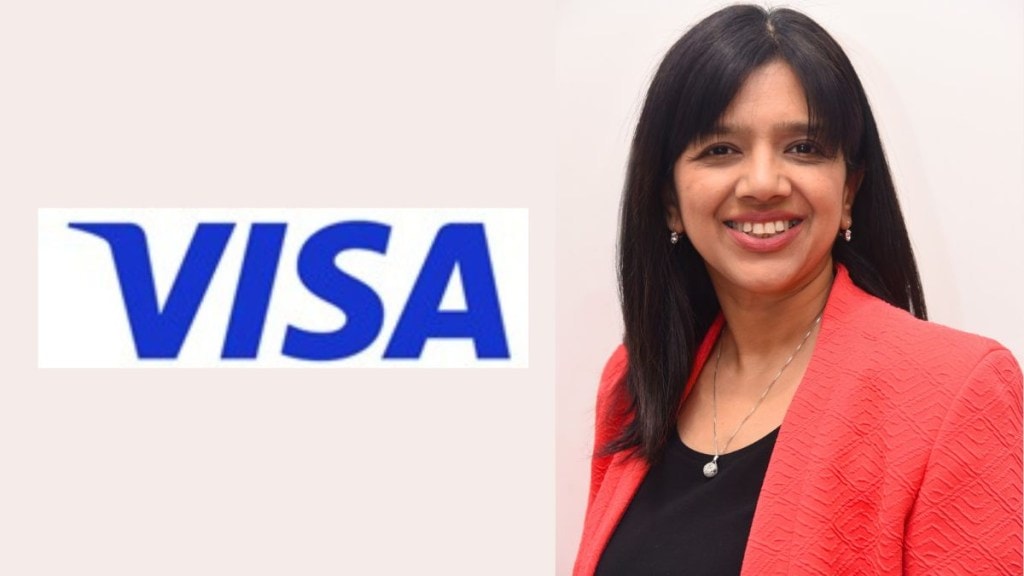As the world prepares for the upcoming Paris Olympics 2024, brands across boundaries seem to have started to implement their marketing strategies to catch on the eyeballs. Visa which has had a long association with tourneys too have hopped on the bandwagon. Moreover, Visa, which has been the global sponsor of FIFA since 2007 and Olympics since 1986, has onboarded gold medalist Neeraj Chopra as the brand ambassador.
India has witnessed a surge in unified payments interface (UPI) transactions in 2023. In FY 2022-23, 8,375 crore transactions were reported up from 92 crore transactions in FY 2017-18, showcasing a compound annual growth rate (CAGR) of 147% in terms of volume, as per a report released by the Reserve Bank of India. In a conversation with BrandWagon Online, Sujatha V Kumar, head of marketing, Visa India and South Asia, spoke about the sponsorship plans for Olympics 2024 besides the trends in digital payments. (Edited Excerpts)
What is the impact on business with more and more consumers opting for Unified Payments Interface (UPI)? Not to mention UPI is being used in countries like France.
It is good to have more number players in the market as the whole objective is to grow digital payments and to move the economy from cash to cashless. I think competition helps to grow that pie and there is room for all types of payments including cards, quick response (QR) codes, and banking apps. This is because one type doesn’t fulfil different needs. We continue to focus on our brand vision of being the most secure form of payment. It is great to have different players in the market serving different needs and fulfilling the objective of the country, which is to increase digital payments.
What is the marketing mix? How is your ad spend split between traditional and digital media?
We look at an equal mix of traditional mass media to reach a wide percentage of the population as well as niche social media and digital campaigns as well. For instance, Pay Safe with Visa campaign, which is about getting consumers aware of how to use digital payment and how to be safe and secure during payments, we used traditional media such as television as it reaches the 700-800 million population of the country to serve the message. However, we use social and digital media for cross-border purposes, that is people travelling from India to overseas. In such cases, we use programmatic to serve the relevant audience with relevant messaging to answer their needs. So, traditional media is for the masses and digital media is for the niche audience.
Generally, the advertising budget is equally split between the traditional and digital mediums. Thus, 50% of the budget is for TVCs (television commercials) and the rest is for connected TV, OTT, and social media such as Instagram, YouTube, and Facebook.
You recently collaborated with Neeraj Chopra, what are your plans for the Paris 2024 Olympics Games? How much are you planning to spend on advertising?
We started our association with the Olympics in India in 2019 when we signed badminton player PV Sindhu and this year we added Neeraj Chopra to that list. We launched a campaign called A Million Cheers during Tokyo Olympics 2020, where we asked fans to share their messages for PV Sindhu as there were no spectators during that season due to the pandemic. Since the situation is different this year, we are planning to activate the campaign quite largely around mid-June and will carry on till the games go on. It will also have on-ground activations for spectators/fans to take part in and we will also offer a chance for a few consumers to fly and get a chance to see the Olympics live. We are also planning to tie up across different cities in the country and host viewing parties, wherein people can come and watch the event live. Additionally, we will also have merchandise from the Paris Olympics such as towels, t-shirts, duffle bags, among others.
However, it is quite early to talk about the spending and advertising budget.
What is the trend post-Covid in the payment sector? How do you expect 2024 to be?
The pandemic spurred digital payments and as a result, the BFSI (Banking and Financial Services, Insurance) sector has experienced a growth in people adopting digital payments, moving from cash to cashless. The entire trend of digital payments has grown and we have seen people becoming more educated on how to pay online using cards or for that matter through UPI apps. We have also seen a need for brands to educate consumers on how to pay securely online besides, how not to get trapped in scams or frauds and the need for security in transactions. Moving forward, we will only see a bigger acceleration as more people across the globe are adopting digital payments. We will see transactions becoming faster, convenient and security getting stronger, and technological advancements.
Explain your partnership with banks. What are the plans?
We are into both business-to-business (B2B) and business-to-consumer (B2C). In B2B, we have clients, mainly banks and fintechs, that give out Visa credentials such as credit cards. We partner with them and do co-marketing campaigns to reach their customers. We also partner with merchants, which is our B2C side, as these merchants have to accept the payments. We work very closely with them to increase acceptance and make the Visa payments the preferred one at the point of sale.
